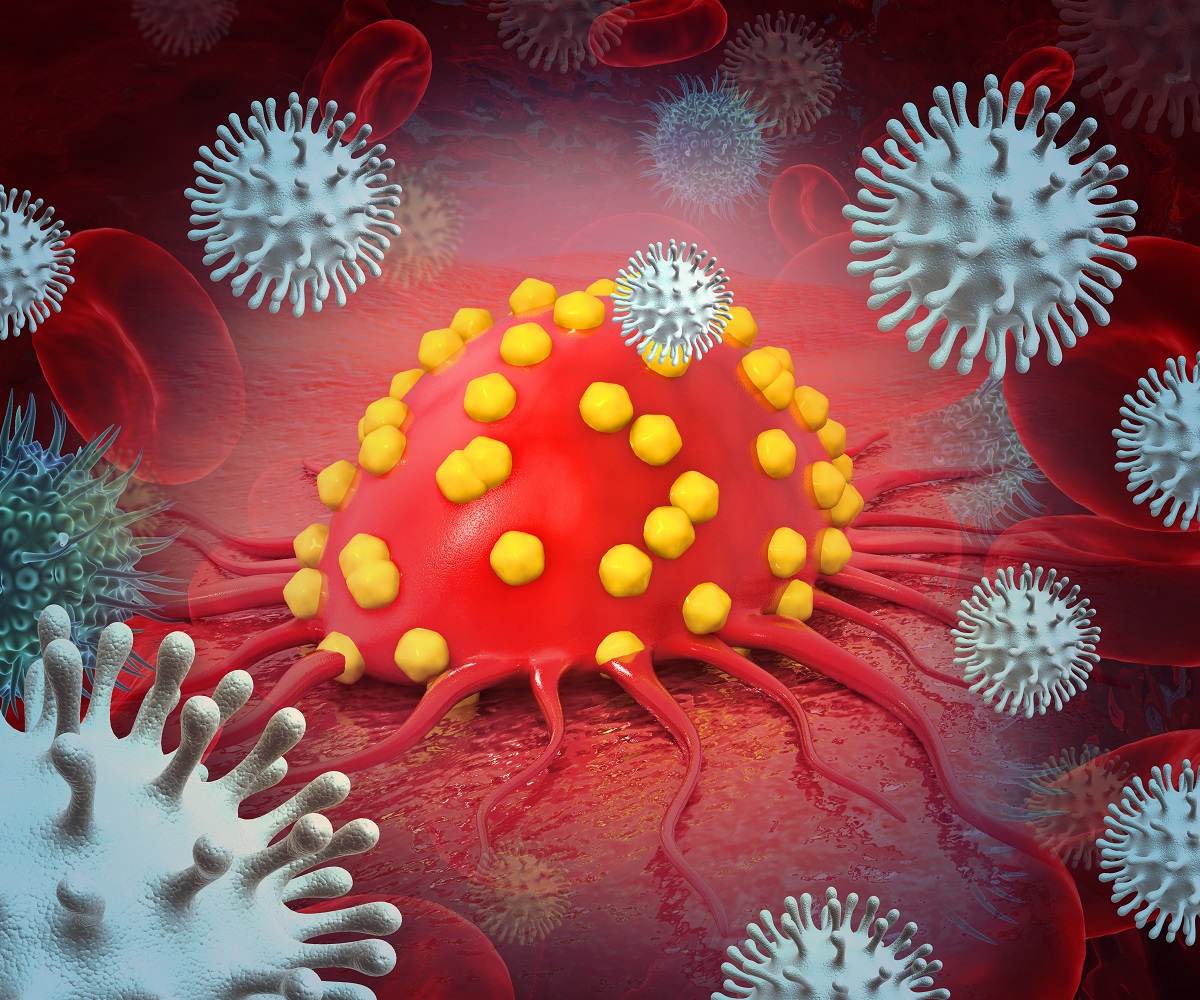KEY TAKEAWAYS
- The B-IMMUNE Phase I & II study aimed to investigate the safety, and efficacy of durvalumab in neoadjuvant treatment for early BC.
- In this ongoing phase 1&2 study, the dynamic enrichment of TCs in locally advanced BC underscores the need for further investigation; additional information will be provided later.
The immunogenicity of breast cancer (BC) determines the efficacy of immune checkpoint inhibitor (ICI) treatment; however, assessing it remains challenging.
Charlotte Birchall and her team aimed to assess the complex interplay between BC immunogenicity and ICI responsiveness. The objective was to comprehensively evaluate the intricacies of BC immunogenicity, providing valuable insights for refining ICI-based therapeutic approaches.
The study performed T cell repertoire (TCR) analysis on 7 patients enrolled in the B-IMMUNE trial, which investigates neoadjuvant treatment for locally advanced luminal B HER2(-) or TN BC. The treatment protocol included paclitaxel (weeks 1-12) and epirubicin/cyclophosphamide with durvalumab (weeks 13-24). Paired blood and tumor samples were collected at baseline, week 12, and week 24. TCR analysis utilized NGS targeted to TCRβ genes with an absolute quantitative bias-controlled approach.
Paired tumor and blood TCR repertoires were compared based on 5000 randomly selected TCRβ sequenced molecules. Tumor-enriched T-cell clonotypes (TE-TCs) were identified as clonotypes at least 50 times more abundant in tumor than in blood (Fisher’s test, P< 10-6). Spatial localization of TE-TCs in tumors was determined using a TCR-targeted custom adaptation of the 10x visium spatial transcriptomics method.
From this analysis, TE-TCs emerged as potential indicators of an anti-tumor T-cell response and a reflection of tumor immunogenicity. These TE-TCs were examined in 7/7 patients before treatment and monitored at weeks 12 and 24 in 5/7 patients. A total of 101 TE-TCs were identified, with 34 detected before treatment, 26 at week 12, and 41 at week 24, ranging from 2 to 9, 1 to 10, and 2 to 20 per patient, respectively.
Among the 34 TE-TCs identified before treatment, 10 (29%) persisted in tumor enrichment at week 12 and/or week 24. Notably, of the 41 TE-TCs detected at week 24, 31 (75%) were not present before treatment, indicating dynamic changes during neoadjuvant therapy.
The spatial distribution of TE-TCs before treatment was assessed in 4/7 patients using spatial transcriptomics (50 μm resolution). TE-TCs were detected in 3/4 patients, localized in a minority of spatial spots (0.3 to 3%). In one patient, spatial analysis after 12 weeks of treatment revealed TE-TCs in 10% of spatial spots. A predominant TE-TC emerged during treatment, showing associations with Granzyme B and PD-1 expression in spatial clusters.
The study concluded that, before treatment, locally advanced BC exhibits variable enrichment of TCs compared to blood, with additional clonotypes becoming enriched during neoadjuvant/ICI treatment. The impact of these dynamic clonotypes on tumor response needs further investigation to enhance our understanding of the complex interplay between TCR changes and treatment outcomes with a specific focus on durvalumab.
The study was sponsored by Grand Hôpital de Charleroi
Source: https://cslide.ctimeetingtech.com/immuno23hybrid/attendee/confcal/show/session/34
Clinical Trial: https://clinicaltrials.gov/study/NCT03356860
Birchall C, et al. “Dynamics of breast cancer T cell repertoire during neoadjuvant chemotherapy / immunotherapy.” Presented at ESMO IO (Abstract: 178P).



